Waterfalls challenge smartphone photographers due to their high contrast scenes and dynamic nature. You'll face exposure issues with bright water against dark surroundings, and automatic settings often underexpose shadows. Capturing the flow of water while keeping surroundings sharp requires balancing shutter speed and stability. Your smartphone's limited manual controls and fixed lens make it tough to achieve the desired effects. Low light conditions in forested areas add another layer of difficulty. Overcoming these obstacles involves mastering your phone's features, using HDR mode, and employing creative techniques. With the right approach, you can turn these tricky subjects into stunning images.
Exposure Challenges in Waterfall Photography
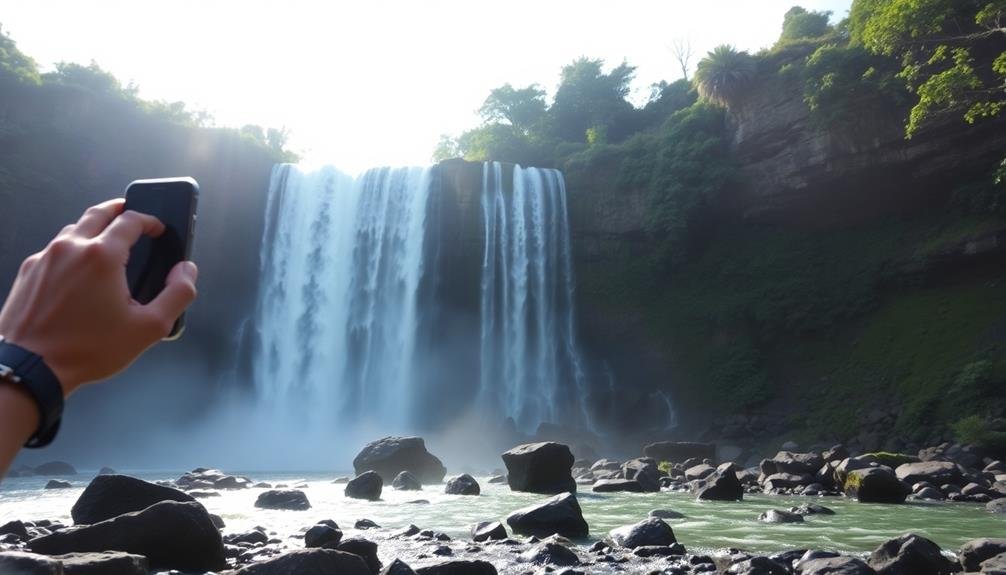
Complexity reigns when it comes to capturing waterfalls with your smartphone. You're faced with a scene that combines bright, reflective water with darker surrounding elements like rocks and foliage. This high contrast situation challenges your phone's camera sensor, which struggles to capture both extremes simultaneously.
Your smartphone's automatic exposure settings often prioritize the brighter areas, leaving shadows underexposed. Alternatively, it might expose for the darker areas, causing the water to appear as a blown-out white mass. To combat this, you'll need to manually adjust your exposure. Most smartphone cameras allow you to tap on the screen and drag up or down to fine-tune the exposure.
Another challenge is motion blur. Fast-moving water can appear blurry or lack detail in smartphone photos due to slower shutter speeds. While this can create a pleasing silky effect, it's not always desirable.
To freeze the water's motion, you'll need to increase your shutter speed, which may require additional light or a higher ISO setting. Some newer smartphones offer manual controls or specialized modes for capturing moving water, giving you more flexibility in tackling these exposure challenges.
Dealing With High Contrast Scenes
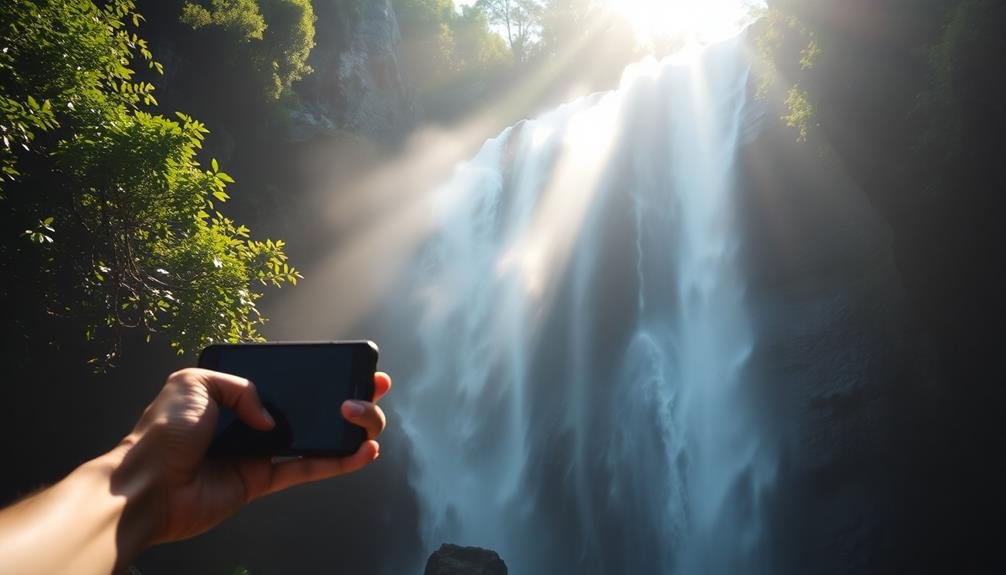
Mastery of high contrast scenes is essential for successful waterfall photography with your smartphone. Waterfalls often present challenging lighting conditions, with bright, sunlit areas and deep shadows in the same frame. Your smartphone's camera may struggle to capture both extremes simultaneously, resulting in blown-out highlights or lost shadow details.
To tackle this, use your phone's HDR (High Dynamic Range) mode. It'll take multiple exposures and combine them, preserving details in both bright and dark areas. If your phone lacks HDR, try manually adjusting exposure by tapping on different parts of the scene and sliding the exposure compensation bar.
Consider using editing apps to recover highlights and shadows post-capture. Apps like Snapseed or Lightroom Mobile offer powerful tools for balancing exposure. You can also try bracketing shots by taking multiple photos at different exposures and blending them later.
For extreme contrast, consider visiting waterfalls during overcast days or during the "golden hours" near sunrise or sunset. These conditions naturally reduce contrast, making it easier for your smartphone to capture a balanced image.
Capturing Motion and Stillness
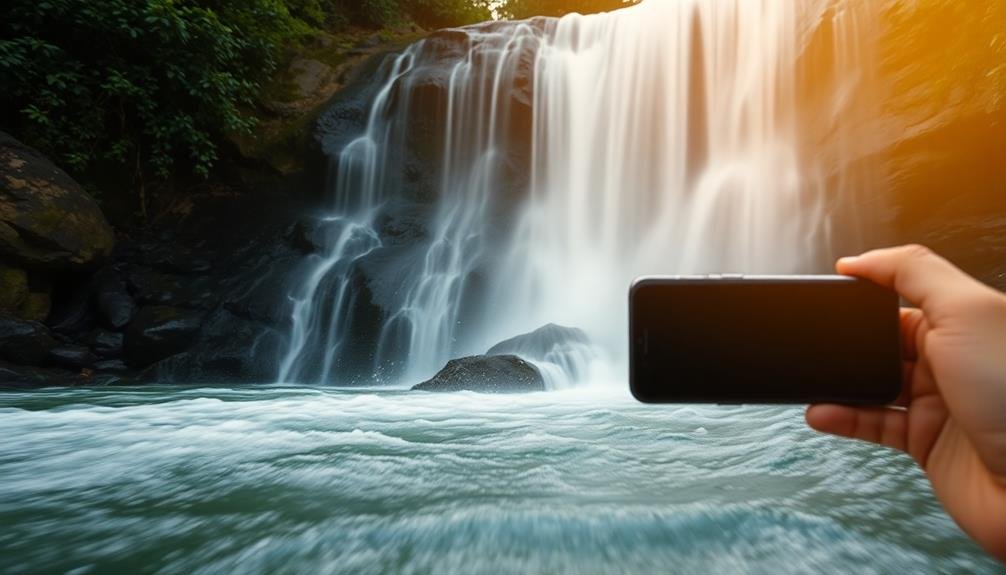
Waterfalls present a unique challenge in smartphone photography: capturing both motion and stillness in a single frame. You'll want to showcase the flowing water's movement while keeping the surrounding rocks and vegetation sharp. This contrast creates a dynamic and visually appealing image.
To achieve this effect, you'll need to experiment with shutter speed. Most smartphone cameras don't allow manual control over shutter speed, but you can use third-party apps or specific camera modes to gain more control. Aim for a slightly longer exposure time, typically between 1/4 and 1 second, to blur the water's motion.
To keep the non-moving elements sharp, you'll need to stabilize your phone. Use a tripod or rest your device on a stable surface. If your phone has a night mode or long exposure feature, try using it for waterfall shots.
Consider composition carefully. Frame your shot to include both the flowing water and static elements like rocks or trees. This contrast will emphasize the waterfall's movement while providing context and depth to your image.
Limited Manual Controls on Smartphones
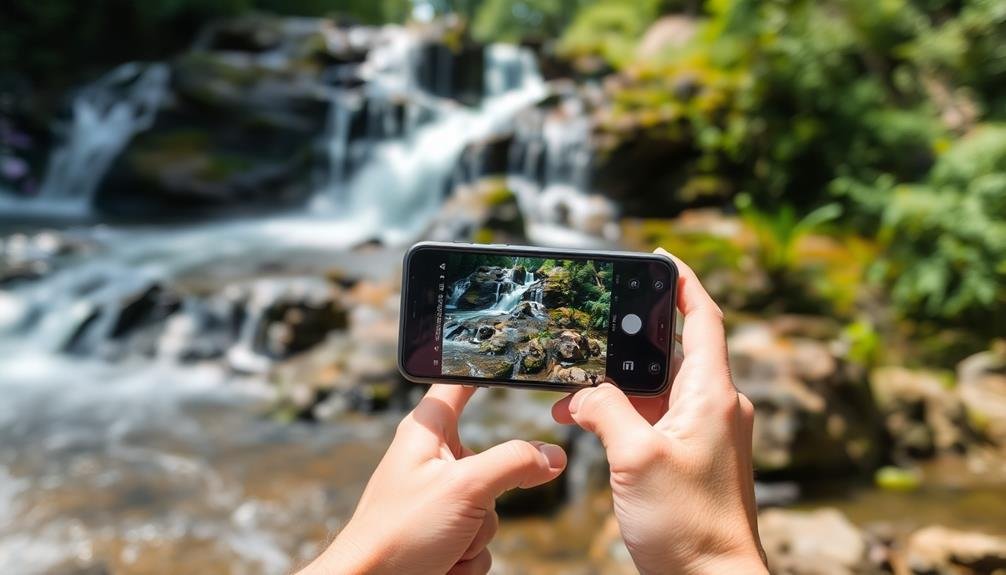
Smartphone cameras have come a long way, but they still lack the full range of manual controls found in professional cameras. This limitation can make capturing waterfalls particularly challenging.
When photographing moving water, you'll often want to use slow shutter speeds to create that smooth, silky effect. However, most smartphones don't allow you to manually adjust shutter speed, aperture, or ISO.
Instead, you're left relying on your phone's auto mode or limited preset options. Some newer models offer a "pro" or "manual" mode, but these still don't provide the same level of control as a DSLR or mirrorless camera.
You might find it difficult to achieve the desired long exposure effect without overexposing your image or introducing too much noise.
To work around these limitations, you can try third-party camera apps that offer more manual controls. Alternatively, use accessories like neutral density filters to reduce light intake, allowing for longer exposures.
Remember to stabilize your phone with a tripod or steady surface to avoid camera shake. While these workarounds can help, they don't fully compensate for the lack of built-in manual controls on most smartphones.
Lens Limitations for Wide Scenes
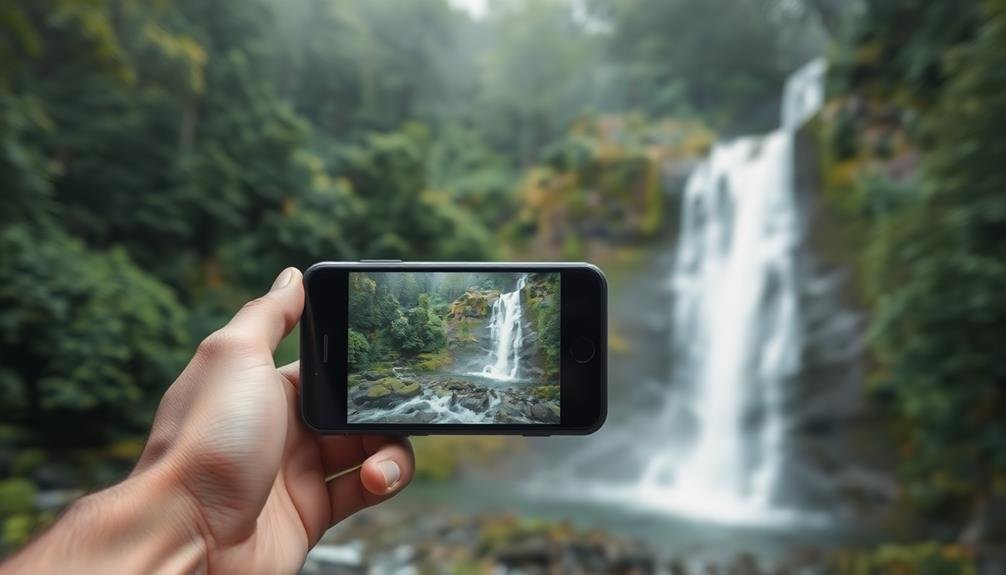
In addition to limited manual controls, smartphone photographers face challenges when it comes to capturing wide waterfall scenes. The primary issue is the fixed lens on most smartphones, which typically has a focal length equivalent to around 28mm on a full-frame camera. This relatively narrow field of view can make it difficult to capture the entire breadth and grandeur of a waterfall, especially if you're close to it.
You'll often find yourself struggling to fit the entire waterfall and its surrounding landscape into a single frame. This limitation forces you to either move farther away from the scene, potentially losing detail and impact, or to capture only a portion of the waterfall.
While some smartphones offer an ultra-wide lens option, these can introduce distortion and may not always provide the best image quality.
To overcome this, you might need to resort to panorama mode or photo stitching techniques. However, these methods can be challenging with moving water and may not always produce seamless results.
Alternatively, you could consider using add-on lenses for your smartphone, but these require additional investment and can be cumbersome to carry and use in the field.
Overcoming Low Light Conditions
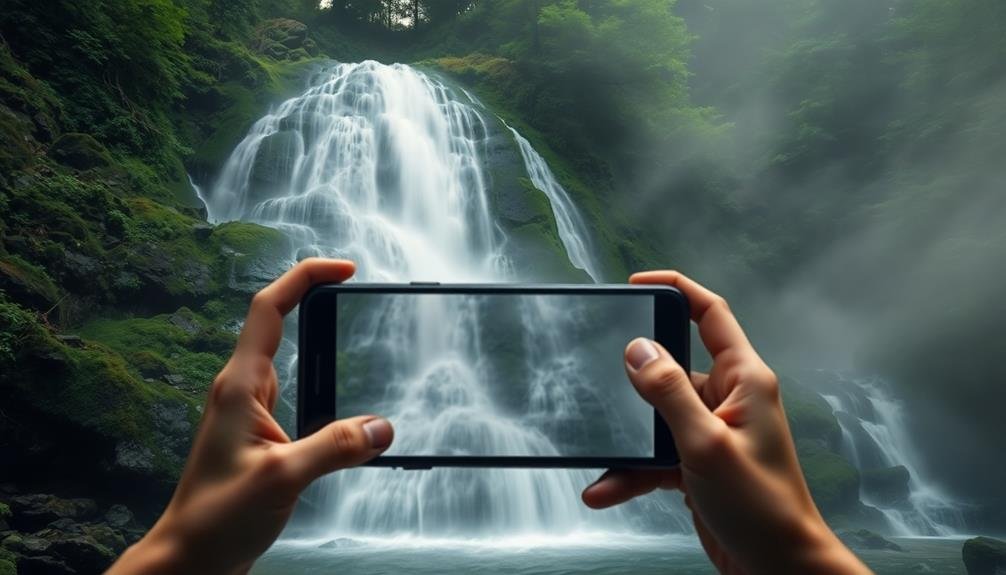
When you're photographing waterfalls, you'll often encounter challenging low-light conditions. Dense foliage, deep gorges, and overhanging cliffs can considerably reduce the amount of available light. To overcome this, you'll need to adjust your smartphone's settings and employ some strategic techniques.
First, tap on the darkest part of your scene to adjust the exposure. This will help prevent overexposure of brighter areas. Next, enable HDR mode if your phone has it. This feature combines multiple exposures to capture details in both shadows and highlights.
If your device allows manual control, increase the ISO to make the sensor more light-sensitive, but be cautious as this can introduce noise. Consider using a tripod or stabilizing your phone against a solid surface to reduce camera shake in low light. You can also try using the volume buttons or a remote shutter to minimize movement when taking the shot.
If your smartphone has a night mode, activate it for better low-light performance. Finally, shoot in RAW format if possible, as it retains more data and allows for greater flexibility in post-processing to recover details from shadows and highlights.
Frequently Asked Questions
How Do I Protect My Smartphone From Water Damage While Photographing Waterfalls?
To protect your smartphone from water damage while photographing waterfalls, you'll want to use a waterproof case or bag. Don't forget to keep your device away from direct water spray and always dry it thoroughly afterwards. Avoid submerging it completely.
What Apps Can Enhance Waterfall Photos Taken on Smartphones?
You'll find several apps to enhance your waterfall photos. Try Snapseed for adjusting exposure and adding filters. VSCO's presets can create moody atmospheres. Lightroom Mobile offers advanced editing tools. For long exposures, try Slow Shutter Cam or Camera+ 2.
Are There Specific Smartphone Models Best Suited for Waterfall Photography?
You'll find high-end smartphones with advanced cameras are better for waterfall photography. Look for models with manual controls, HDR capabilities, and optical image stabilization. iPhones, Google Pixels, and Samsung Galaxy phones often excel in these areas.
How Can I Stabilize My Smartphone for Long-Exposure Waterfall Shots?
You can stabilize your smartphone for long-exposure waterfall shots by using a tripod or phone mount. Don't have one? Prop your phone against a rock or tree, or use a bean bag for support. Enable your phone's timer feature.
What Time of Day Is Ideal for Capturing Waterfalls With a Smartphone?
You'll get the best waterfall shots in the early morning or late afternoon. Avoid harsh midday light that creates excessive contrast. Overcast days are ideal, as they provide soft, even lighting that enhances the water's texture and movement.
In Summary
You've learned that waterfall photography with smartphones presents unique challenges. You're facing exposure issues, high contrast scenes, and the need to balance motion and stillness. Your phone's limited manual controls and lens restrictions make it tougher. But don't give up! With practice and some creative workarounds, you'll improve. Remember, it's about capturing the moment, not perfection. Keep experimenting, and you'll soon be taking stunning waterfall shots with your smartphone.

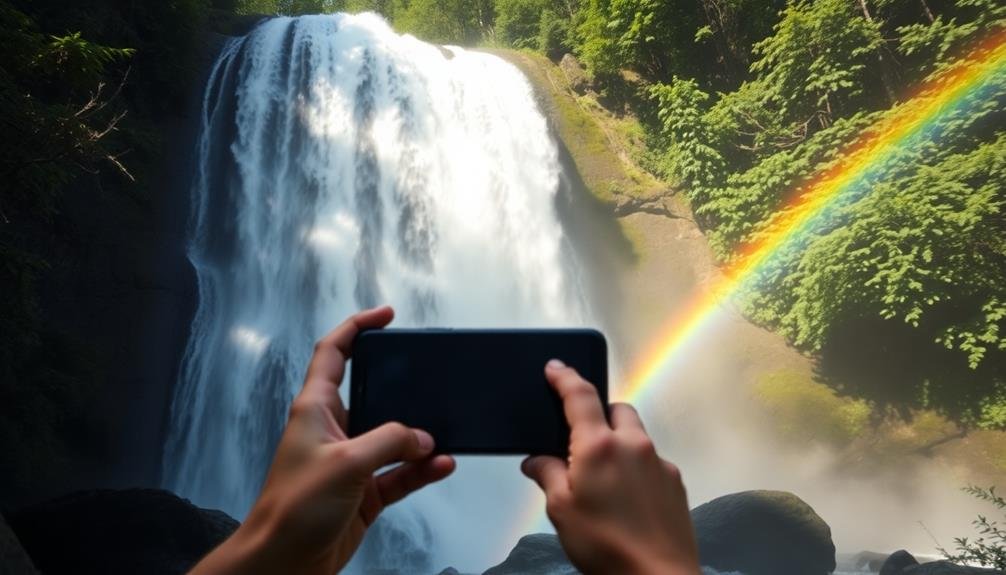
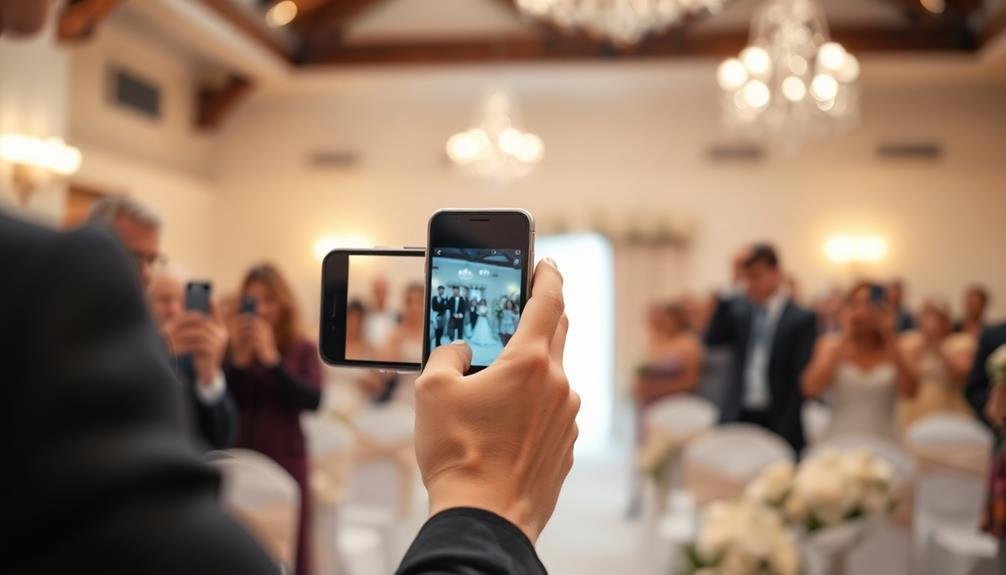
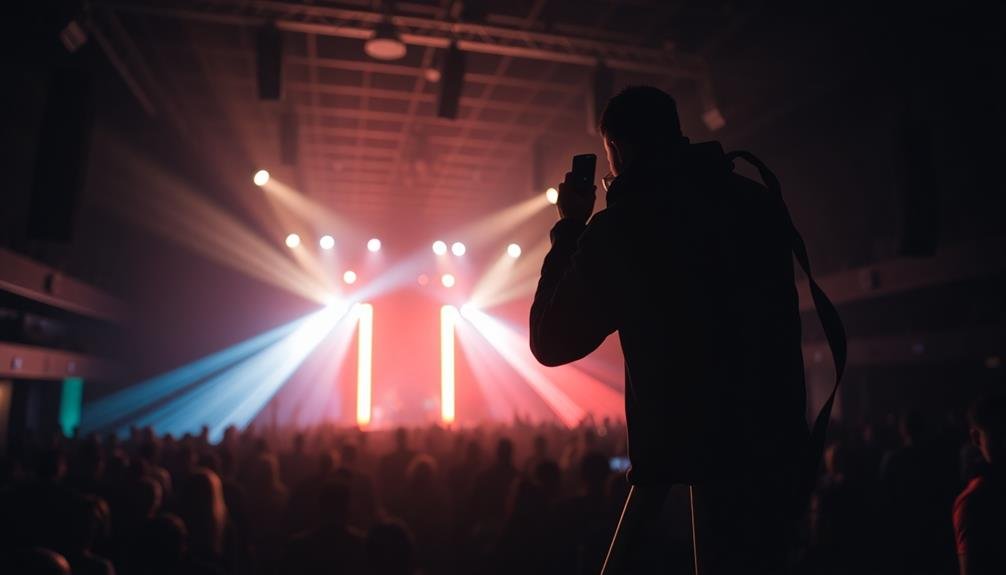

Leave a Reply